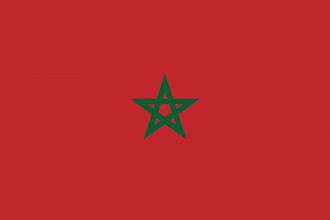Lying at the northwest corner of Africa, Morocco (officially known as the “Kingdom of Morocco”) neighbours across the sea with the Canary Islands (to the west), the Strait of Gibraltar and mainland Spain, as well as by land, with the Spanish possessions of Ceuta and Melilla, to the north. Further, the country borders with Algeria to the east and Mauritania to the southeast. The country’s capital is Rabat. However, the largest and most populous (3.5 billion) city in the country, is Casablanca; with a highly developed infrastructure, it has turned into an industrial centre, attracting many international companies, in recent times. Other major cities include Fes, Kenitra, Marrakesh, Nador, Sale, Tangier and Tetouan.
Its geostrategic position at the junction of Europe, Africa and the Arab world and between the crossroads of the Mediterranean Sea & the Atlantic Ocean, has allowed the country to operate as a gateway of exports from Africa to the rest of the world. Moreover, with a total coastline of 1,835 km and a border shared with the Western Sahara to the south -an area of 250km2- where Morocco’s governance has been challenged for many years by the surrounding countries, its west sea-borders seem unprotected. Therefore, in order to preserve its sovereignty and trade interests, the North-African country has chosen to create ‘alliances’ with influential nations operating in the region, such as France and Spain.
In terms of socioeconomic data, in 1990, Morocco committed to halve its poverty rate, in all its aspects, by 2015. Despite the associated efforts, mainly due to high droughts that Morocco experienced till 1999, the results were opposite – from 13.1% in 1990, poverty increased to 16.2% in 1999. In the aftermath of the economic crisis of the referenced decade, Morocco’s positive growth in the period 2000-2007, reduced the absolute poverty rate from 15.3% in 2001, to 8.9% in 2007. Overall, in the 2000s, more than 1.7 million Moroccans moved out of poverty. In fact, demographic changes, stability of the economy, investment in infrastructure, fiscal reforms (e.g. security of tax revenues) and active participation of NGOs, contributed to this decline. However, reforms need to continue, as the country is still one of the poorest in the Arab world – trailing Mauritania, Sudan and Yemen.
With a 33.8 million recorded population (2014), inequalities still remain high in Morocco -despite the growth seen in the last few decades, as well as the highly valued perception by Moroccan citizens of their standard of living.
Moreover, according to the Human Development Index (HDI) - an indicator of inequality in the distribution of human development across the population of a country -, Morocco ranked 126th, in 2014. Despite an overall improvement of some 37% since 1990, the country is aligned with the progress of medium human development countries.

